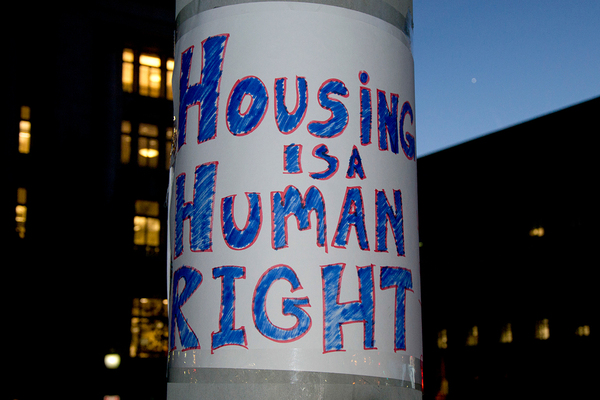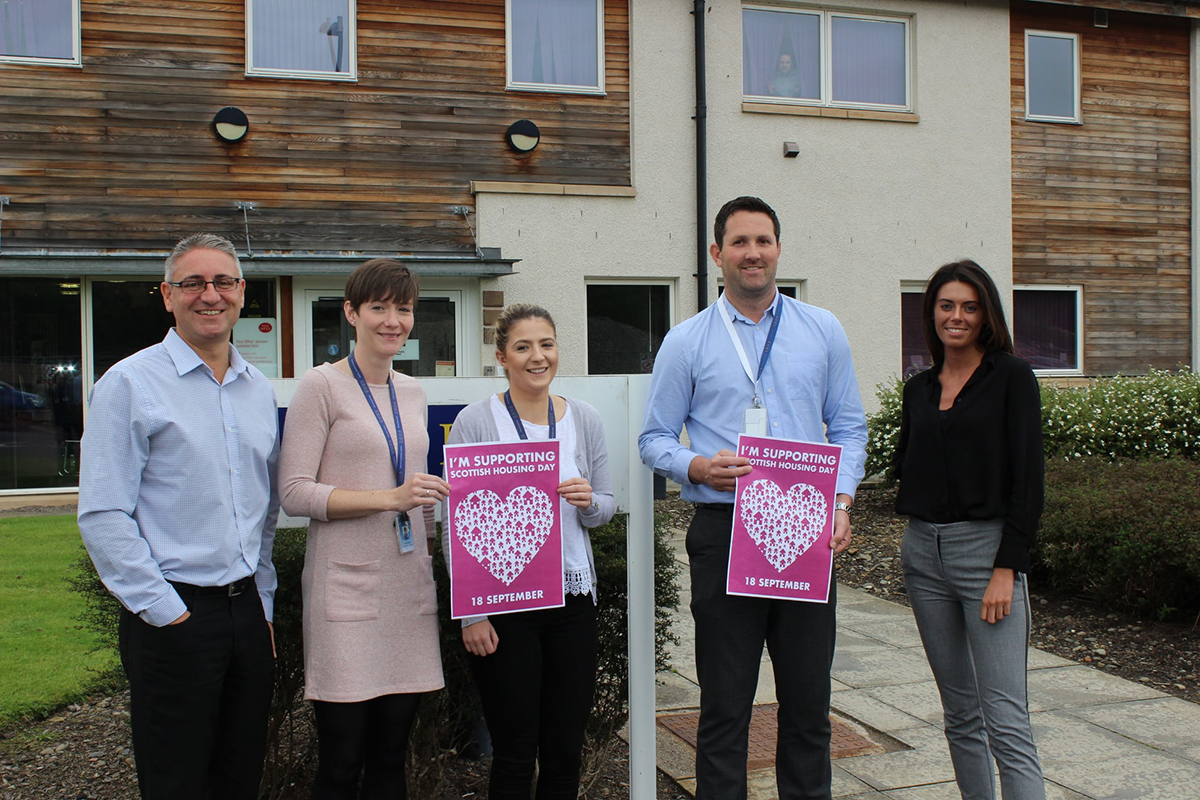You are viewing 1 of your 1 free articles
How do we deliver on housing as a human right?
Last month’s Scottish Housing Day had the theme of housing as a human right. Sally Thomas asks what we can learn from the past century on the issue
One hundred years ago, the ground-breaking Addison Act was passed, recognising the central role that housing plays in the lives of citizens and communities.
For the first time the government took on responsibility for providing “homes fit for heroes” returning from World War I.
A response to the shocking lack of adequate housing, it paved the way for a century of building affordable homes for the common good.
Since then, the right to adequate housing has been recognised in the Universal Declaration of Human Rights as well in the 1966 International Covenant on Economic, Social and Cultural Rights.
Despite this, though, it hasn’t always been reflected in reality. In the UK, around 125,000 children live in temporary housing, rough sleeping is on the rise in our cities, and memories of the Grenfell Tower tragedy remind us that far too many people are living in inadequate, insecure and even dangerous housing.
Given the situation, it’s about time the UK finally took housing as a human right seriously. In Scotland, some progress is being made. First minister Nicola Sturgeon set up an advisory group on housing as a human right, recommending this should be included in a new act. This is a hugely welcome move but it is just a starting point.
Here we can look to past housing champions for guidance moving forward – Lord Christopher Addison, Aneurin Bevan and John Wheatley.
Any significant change starts with a vision. Lord Addison’s vision was to ensure that soldiers, sailors and airmen and their families did not have to return to the slums of the pre-war era.
Mr Wheatley wanted to ensure that every worker could afford a decent home, while Mr Bevan imagined “housing owned by the people, for the people”.
But to deliver the vision you need the tools: leadership, collaboration, policies, legislation and money. You also need intervention – Lord Addison, Mr Wheatley and Mr Bevan all intervened in the housing system on a phenomenal scale.
“Changes to welfare and stagnant wages have left households feeling the squeeze. Government support is fundamental to affordability”
They were responsible for hundreds of thousands of homes and understood the role of government in providing for the most basic and essential needs of people. They also had the courage, bravery and belief to make it happen.
The ‘right to a home’ only means something if every person has access to one. Each day, social housing providers across the UK provide high-quality, safe, secure and affordable homes so people can build their lives with confidence, dignity and hope.
In Scotland, we are well on the way to meeting the target of building 50,000 affordable housing, including 35,000 homes for social rent. At the same time, we are also delivering on a social purpose: tackling the huge challenges of poverty, climate change and economic stability.
Now, with over a century’s experience and lessons learned from Lord Addison to the current day, we know that there are four things needed to deliver on housing as a human right.
First: availability. In 2016, the Scottish government committed to the target of 50,000 affordable home to be delivered by 2021.
We’re proud that this is well on the way to being reached but there is still much to be done.
We have commissioned fresh research to determine the ongoing need after 2021 and, with over 160,000 households on waiting lists and many more ‘hidden homeless’, it is safe to say there will be an increasing demand.
While we do need to look beyond a numerical target – at location, type, tenures, financial models – we know we must keep going at scale.
The demand for housing is not finite – it is a job that goes on day in, day out and year in, year out.
“Changes to welfare and stagnant wages have left households feeling the squeeze. Government support is fundamental to affordability”
The second challenge is affordability. Social housing providers work hard to keep rents down while delivering an increasingly higher quality of build, adaptability, energy use and placemaking, with any surplus put back into more homes.
Changes to welfare and stagnant wages have left households feeling the squeeze. Government support is fundamental to affordability.
It’s also the right thing to do morally. We are happy to see our taxes used to provide a health service, education, and to police our streets and communities – we must see housing in the same way.
Third: suitability. It is increasingly important that homes are fit for people’s needs. The number of people requiring their homes to be adapted so they can live healthier, more independent lives has increased substantially and the national budget has been frozen for the past seven years.
We need to provide the right homes in the right places – with the same high standards across all tenures in terms of quality, access, energy efficiency and public perception.
This is not just about new homes but refurbished ones too, along with strategic acquisitions from the private rented sector.
There needs to be more recognition of the perfect storm of a growing population and one which is getting older, with more people living alone. Too many people are currently struggling with the costs of private rent and homeownership as aspirations change about how and where we live.
Finally, we must increasingly focus on placemaking and do so in a way that fosters neighbourliness, access to jobs and training, and with environments of practicality, beauty and well-being.
My vision is for a positive reframing of the housing system through the lens of social justice.
One which puts social housing on equal terms with all other options. Not as a last resort but part of the mainstream, along with private rent and homeownership. We should recognise that the property ladder is a failing concept: for many it is no longer possible, or even desirable, to climb a ladder.
What’s needed is a level playing field of housing options and choices, with tenure neutrality in standard and quality, public perception and access.
In Scotland, we have made significant strides on standards, tenancy security, homelessness and affordable homes.
However, there is much more to be done. A strong and renewed commitment to social homes in Scotland will pave the way for a fairer society that puts individual rights at the heart of housing and demonstrates international leadership.
The first step is for the Scottish government to now commit to a new building programme after 2021, setting an example for the rest of the UK.
Sally Thomas, chief executive, Scottish Federation of Housing Associations












